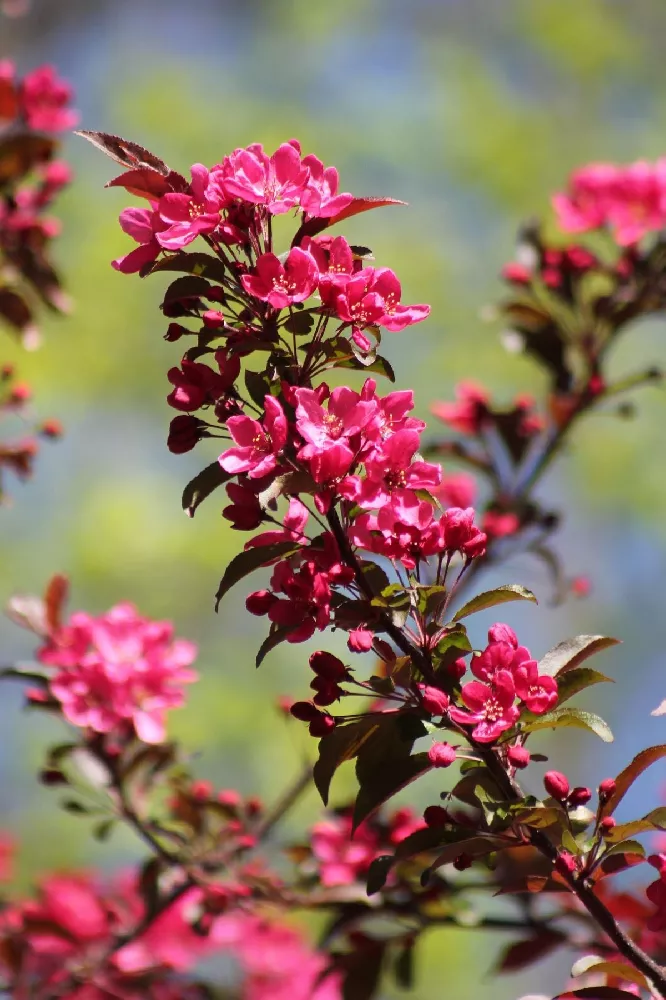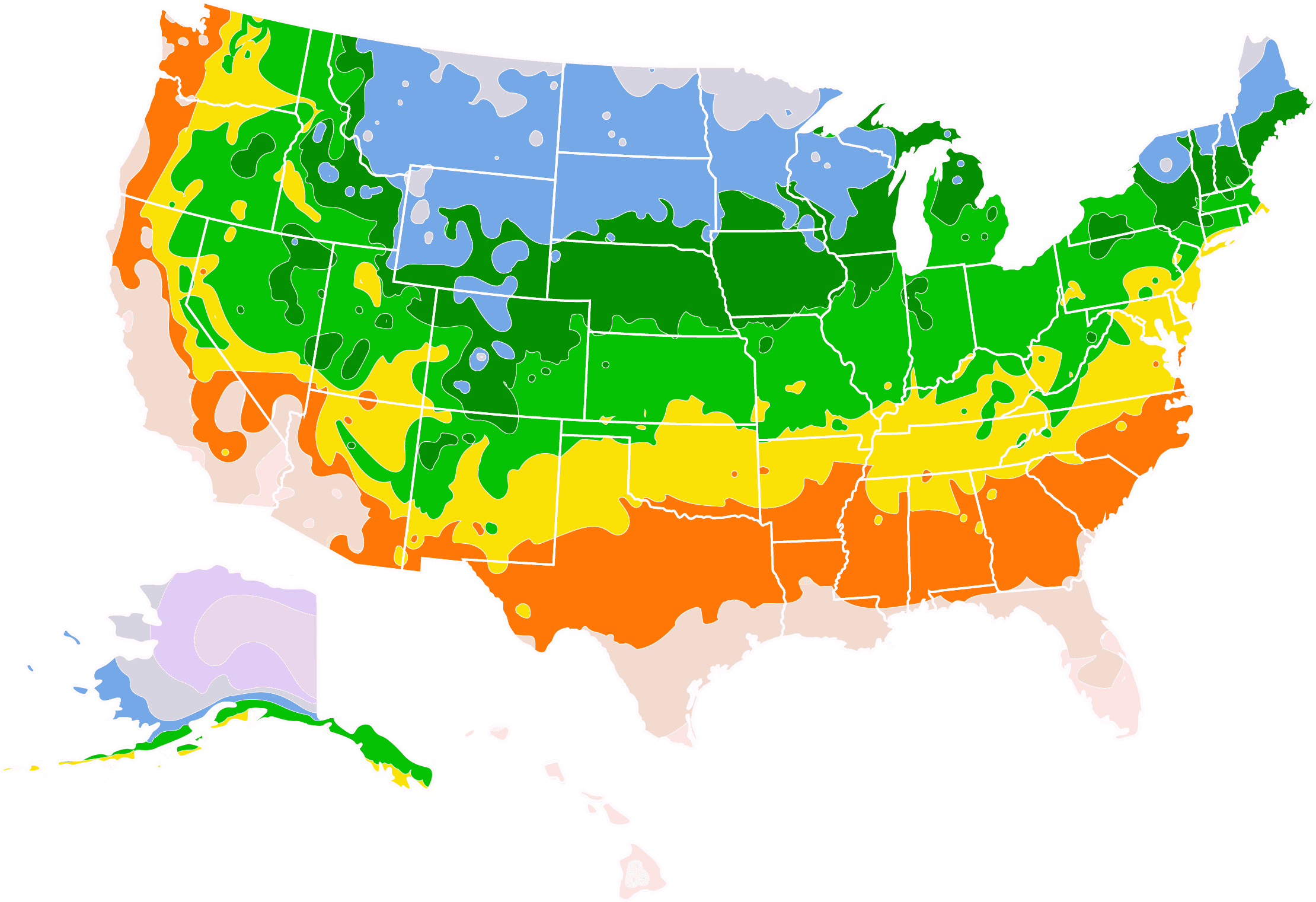- Home >
- Flowers >
- Trees and Plants with Pink Flowers >
- Royal Raindrops® Crabapple Tree
Royal Raindrops® Crabapple Tree for Sale - Buying & Growing Guide
- Ships in 1-2 days
- 1-Year Warranty Eligible
- Pots or accessories are not included unless specified in the product options.
Shipping Details:
Once your order is shipped, you’ll receive an email with a tracking number and estimated delivery date. Most orders ship immediately, but some items are seasonal and may only ship in spring or fall. These products are noted on the website.
Few trees pack as much color into a small frame as the Royal Raindrops® crabapple tree, Malus 'JFS-KW5. The show begins in mid-spring, with profuse, bright pink flowers covering the tree. As these fade, they are replaced by deep purple-bronze cut-leaf foliage and, later, by shiny red berries that are appealing to songbirds. The berries last throughout fall, complementing the bronze and orange display of the leaves. In winter, the berries continue to add a festive touch to the stark branches, making this a tree with a true four seasons of interest. Royal Raindrops® is an easy-care tree that needs little pruning and no fussing over. It is a welcome addition anywhere you want to add a punch of color. Here are a few more reasons to love this attractive tree:
- It has excellent disease resistance and is not prone to diseases that usually attack crabapples.
- It provides a great winter food source for songbirds.
- Its small stature makes it a great choice for smaller urban yards.
Plant Care
Sunlight

Grow Royal Raindrops® crabapple in full sun — 6 or more hours of direct light a day.
Watering
Water young trees weekly; a mature tree only needs supplemental watering during droughts.
Fertilizing

Apply a balanced, slow-release product such as a 5-5-5- formula in early spring.
Planting and Care
Planting instructions
Site your tree in fertile, well-draining soil that receives at least 6 hours of direct light a day. Unpot your sapling and tease out any encircling roots, which can girdle the tree and slowly kill it. Dig a hole that’s as deep as the root ball and twice as wide. Place the tree in the hole, spreading out the roots. Holding it upright and steady, fill in around the roots with topsoil, tamping down as you go to eliminate air pockets. Water thoroughly. Apply a 2- to 3-inch layer of organic mulch such as bark chips around the root zone to conserve moisture and hinder weed growth, but keep it from touching the trunk to avoid problems with rot.
Watering and nutrients
Water your newly-planted crabapple every few days until you see robust new growth appearing on the branches. Then taper back to once-a-week watering for the remainder of the first year. Once established, these trees are moderately drought-resistant and will only need supplemental watering in very dry conditions. To determine if water is needed, check the soil two inches below the surface. If it’s dry, give your tree a drink. Fertilize in early spring with a balanced, slow-release product designed for landscape trees and shrubs.
Pollination
Crabapple trees are self-fertile, or monoecious. That means that even if you only have one tree, insects moving from flower to flower will be able to pollinate them. Pollinated flowers result in small red berries on the Royal Raindrops® crabapple, which persist through the winter unless they are eaten by birds.
Pruning
Monitor your crabapple for dead, diseased or damaged limbs, and prune these out whenever you see them. If you wish to prune for shape, do so in late winter before the buds break in the spring.
Pests, diseases, and animals
Royal Raindrops® crabapple is resistant to many of the common pests and diseases of the crabapple family. These include insects such as tent caterpillars, aphids, and Japanese beetles. A healthy tree can usually fend off infestations on its own, but if insect pressure is severe, consider releasing beneficial insects such as ladybugs or lacewings to eat them. Common crabapple diseases include scab, fire blight and powdery mildew, but you are unlikely to see these on your tree.
Achieving maximum results
Knowing how to use your tree to maximum effect in your garden is important, especially with showy plantings such as Royal Raindrops® crabapple. These trees are superb specimen plantings, and if you’re not sure where to place yours, consider a highly visible spot so that your tree can receive the admiration it deserves. These crabapples are also good near the back of a mixed perennial border or flanking a front entryway. If you have a cottage garden, Royal Raindrops® would look splendid in the center of it.
FAQs
How large does Royal Raindrops® crabapple get?
This crabapple tree stays fairly petite. The mature height of a well-cared-for tree will be around 15-20 feet, with a mature width of 12-15 feet. Because of this, it is suitable for smaller gardens and landscapes and can even be grown in large containers.
Where can I grow Royal Raindrops® crabapple?
This sturdy little tree is hardy down to -20 degrees Fahrenheit. That means it can be grown throughout most of the Northern U.S., with the exception of the most northern parts of New England and the Midwest. It also does well in most Southern states, except for those that experience a sub-tropical climate such as southern Florida, Louisiana and Texas.
Is Royal Raindrops® crabapple toxic?
The tree is toxic to cats, dogs and horses, though not to the songbirds and small animals that feast on its berries. Avoid planting it in a pasture where you will have livestock, and keep the tree's leaves away from your companion animals.
Compare Similar Products
You can't add more Product Name - Product size to the cart.
OK







